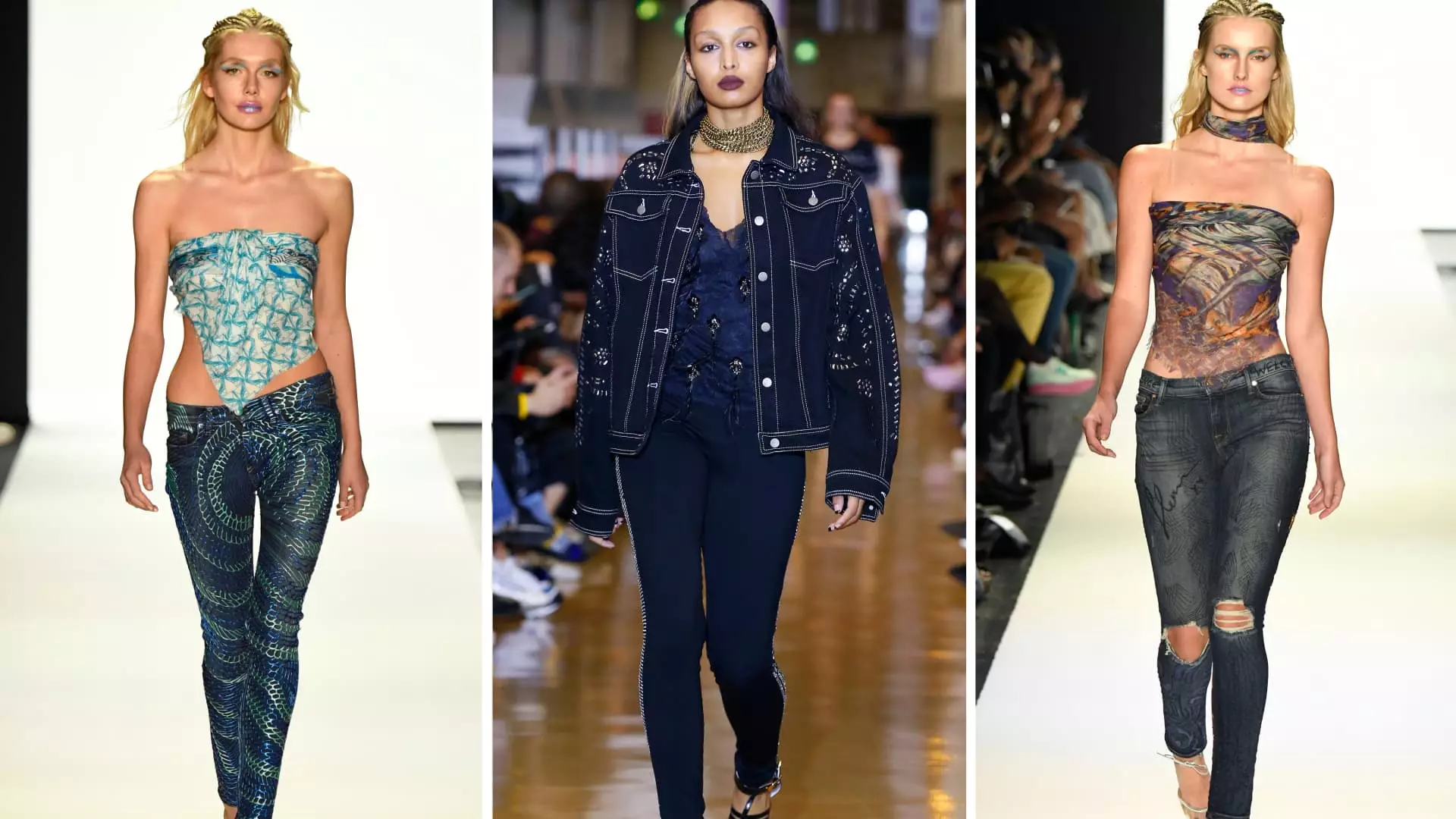Fashion is an ever-evolving landscape; trends come and go, often leaving behind a rich tapestry of nostalgia and socio-cultural significance. Among the most polarizing trends to navigate this cyclical world is the skinny jean. Once a fixture of millennial fashion, skinny jeans have faced fierce criticism, often associated with unrealistic beauty standards. However, as fashion continuously reinterprets itself, it appears that the skinny jean may be on the brink of a significant comeback. Recent developments in social media, runway presentations, and consumer behavior suggest that the skinny jean is not just planning a return but is gearing up to redefine its place in contemporary wardrobes.
One cannot ignore the power of platforms like TikTok and Instagram in shaping fashion trends. Influencers are more than just trendsetters; they act as cultural conduits, channeling the desires and aspirations of their audiences. The resurgence of skinny jeans saw a notable kick-start from TikTok star Alix Earle, who showcased a unique collaboration with the denim brand Frame. Her influence sparked interest that reverberated across other platforms and through various demographics. According to retail analysts, the conversation surrounding skinny jeans has experienced a marked increase, demonstrating how effectively influencers can reignite interest in once-derided pieces.
Google search trends are particularly revealing in this regard; searches for skinny jeans have surged by 50% year-over-year following Earle’s reveal of her exclusive line. This data purports a specific consumer interest that brands have begun to capitalize on, leading retailers like American Eagle and Reformation to report increased demand for this once-unpopular silhouette. In an environment characterized by rapid consumer choice, the ability of skinny jeans to regather consumer interest is a testament to both their versatility and the dynamic nature of fashion marketing.
The runways serve as a critical barometer for the evolution of fashion. Recent seasons have shown a distinct embrace of skinny silhouettes, albeit with modern interpretations. Leading designers such as Prada and Isabel Marant have showcased skinny pants crafted from diverse fabrics and patterns, moving away from traditional solid denim. This notable shift reflects an inclination towards broader stylistic exploration while still honoring the classic essence of skinny jeans.
Fashion experts suggest that while skinny jeans are returning, they will do so in a more sophisticated, less constrictive form. The emphasis is on tailored fits that compliment the body without strictly adhering to overly tight proportions. This evolution indicates a simultaneous acknowledgment of cultural sensibilities around body representation while still providing consumers the fashion-forward options they crave.
Fashion trends invariably reflect consumer behavior; as denim styles evolve, so do the economic undercurrents that support the industry. The anticipated revival of skinny jeans stands to impact not just denim vendors but also the entire retail ecosystem. As retailers prepare for a potential uptick in skinny jean sales, they may experience a cascading effect that necessitates restocking across various categories; footwear and tops that complement these jeans are likely to see increased sales.
Retail analysts suggest that new footwear will be essential as customers embrace the skinny silhouette, creating a scenario where a wardrobe refresh is inevitable. Thus, the return of skinny jeans could act as a catalyst for broader consumer spending within the apparel sector, benefiting businesses at large and energizing an industry that thrives on cyclical trends.
Perhaps the most significant takeaway from the potential return of skinny jeans is the growing recognition of inclusivity in fashion choices. The modern consumer—empowered by social media—now embraces an eclectic wardrobe that encapsulates a variety of styles, from baggy and roomy cuts to the classic skinny. The importance of personal expression over conformity is reshaping how we view and wear denim.
Fashion executives like Levi Strauss CEO Michelle Gass emphasize that one’s denim wardrobe should not be limited to single trends. She urges consumers to embrace a mixed approach that aligns with personal preferences, capacities, and moods. This ethos encapsulates a new fashion narrative—one that celebrates diversity in body types, styles, and individual expression.
As talks of skinny jeans reignite discussions around fashion and personal identity, the question remains: Are skinny jeans here to stay, or will they falter once again under the weight of evolving consumer preferences? The reality is that fashion is not just about silhouettes; it is a reflection of culture, individual confidence, and sociopolitical nuances. Whether you are a die-hard fan of loose, wide-legged pants or find comfort in the snug embrace of skinny jeans, there is room for all interpretations. The future of denim is bright and diverse, embodying every style, silhouette, and personal story.

